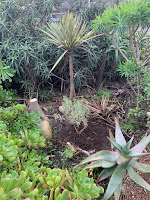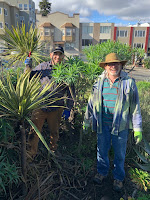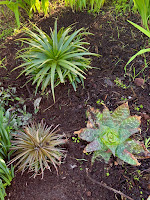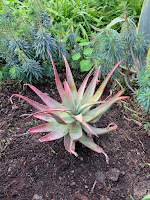 |
| Matt sawing |
Matt and I took another weekend trip to PG and PRG to
plant some plants - it's that time of year, and all the plants we have
accumulated in the last 9 months need to get planted!
We had a great time and lots of new species went in - lots of them thanks to Jamie who donated Grevilleas and Leucadendrons galore recently. I hope they do well!
While
I was busy planting three Agave potatorum "Cameron's Blue" at the top
of PG, Matt took our chainsaw and cut down a tree. Yep! One of the dead
cherry plum trees is GONE! It finally succumbed to years of drought, but
lets face it they're not very long lived trees anyway, and it was about 15 years old. Oh well, more
sun for the other plants. Thank you, next!
 |
| Matt CHAINsawing! |
He
also removed the stump of a Pittosporum and generally tidied up a lot
of things. More to go - I don't think the remaining cherry plum trees
are looking that great... *cackle*
What else got planted? Quite a list:
2 Grevillea gaudichaudii
2 Westringia “Blue Gem”
2 Grevillea sp
2 Leptospermum scoparium prostrate
1 Agave americana medio picta aurea
Most
of those were from Jamie - thanks Jamie! After that, we headed out for
lunch, and after THAT we planted at PRG. Here's the list:
 |
| 3 Agaves and a Leptospermum |
1 unidentified Manzanita
1 Yucca elephantipes
1 Agave geminiflora
2 Salvia canariensis
1 Furcraea of some kind
1 Cortaderia selloana “Silver Comet”
And by then we were knackered, so we went home. Hope you like the new plants! Come to the Volunteer Day on Saturday and find out more about 'em.















